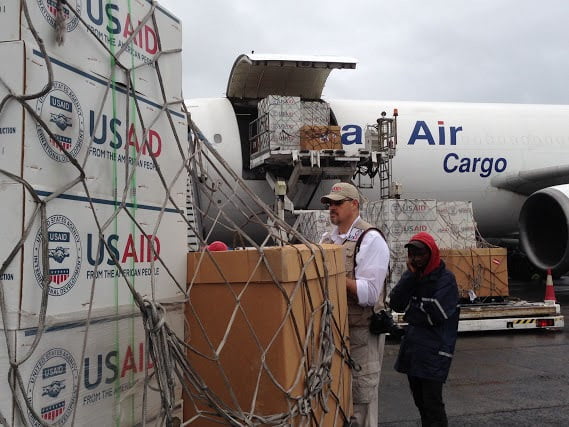While the UN General Assembly gets underway with a renewed focus on the fight against terrorism, yesterday UN Secretary-General Ban Ki Moon convened a high-level meeting regarding the ongoing fight against Ebola. The actions of governments, UN agencies and aid organizations are generally gaining the most attention as the international community struggles to bring the epidemic under control but the private sector is also stepping up to assist efforts in the region.
The stakes for how bad things can get if the epidemic is not controlled came into stark relief earlier this week with the release of two epidemic models by the World Health Organization (WHO) and the US Centers for Disease Control (CDC). Unchecked and without major additional intervention, the WHO predicted the number of reported and probably cases of Ebola in Liberia, Sierra Leone and Guinea could top 20,000 by November. In comparison, the CDC’s model estimated that between 550,000 to 1.4 million cases could occur in the region by January 2015.
The models differ in the predicted number of unreported cases, which explains the wide range of figures given. As the epidemic is already the largest known Ebola outbreak in history, even the lower estimates pose significant challenges for the countries affected and the aid organizations attempting to stem the tide of the disease.
Already the outbreak is straining the resources of the region’s fragile health systems and budgets of aid organizations on the ground. In addition to the recent commitments announced by Western governments for further aid and personnel, for aid organizations already combatting the epidemic, making the most of every dollar available is essential. One possible cost saving mechanism is a program called Airlink, which enlists the help of commercial airlines and cargo flight companies to transport equipment and aid at pennies on the dollar.
Steven Smith, Executive Director of Airlink, announced at CGI this week the creation of a dedicated “airbridge” from the US and Europe that will deliver 80 tons of medical supplies to aid agencies working in Liberia every two weeks through the end of the year. By working with partners such as Royal Air Maroc and Nippon Cargo Airlines as well as the Liberian Ministry of Health, the aid will be connected to 10 NGOs already working in the country that will then distribute the supplies throughout Liberia where it is needed.
“The reason we work with non-profits like AmeriCares and DirectRelief is because they already have the connections on the ground and the distribution plan,” said Smith to UN Dispatch. “We are just facilitating getting it to the main airport.” Unfortunately, this is no small task. As countries and airlines continue to cut off flights and travel from Ebola-effected countries, international response efforts are being impacted as it becomes much harder to move supplies and personnel into the countries where needed. But getting the supplies there is only the first step as the epidemic is widespread throughout Liberia, Sierra Leone and Guinea. “There is always a plan always in place with each shipment,” continued Smith, “with partners on the ground or their own people to take those things and get them where they need to go.” This helps ensure that all the supplies brought in are needed and are distributed to the places that need the most help.
Approaching aid logistics this way will potentially save aid organizations hundreds of thousands of dollars by combining available resources and streamlining the delivery process. This will allow them to spend much needed money on additional medical equipment and personnel rather than on chartering flights to deliver supplies. Given the size of the problem in the region and the possible consequences of not getting the epidemic under control soon, every little bit counts.
However, such programs are more than just about Ebola. Airlink already works with partner airlines and government officials to respond to humanitarian emergencies and provide disaster support around the world, from Typhoon Haiyan in the Philippines to Hurricane Iselle in Hawaii. As the number of people impacted by disasters grows, a critical part of building disaster resiliency is maximizing impact while not cutting aid. Public-private partnerships such as Airlink allow organizations and governments responding to calls for action to do just that, and allow the private sector to contribute in ways that support the work already being done by governments and NGOs on the ground in vulnerable communities.
